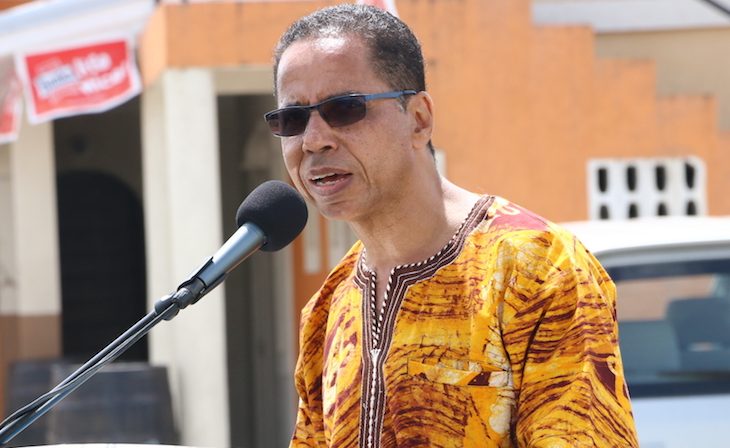By Dr. Edward Greene
This blog is being written when The Conference of Parties on Climate Change (COP 25) in Madrid has commenced. Over the next two weeks, leaders and technocrats from participating countries will be debating policies and programmes resulting from the 2015 Paris Agreement. Among the key alignments, are limiting carbon emissions, attaining green agendas, supporting geoscience, highlighting clean energy, rationalizing fossil fuel investments, implementing carbon taxes and expediting the Climate Investment Fund.
From COP 25 to GIPEX 2 in Guyana
While we await the decisions from COP 25, it is important to note that a most informative event, the 2nd Annual Guyana International Petroleum Business Summit and Exhibition (GIPEX 2019), was held at the Guyana Marriott, November 20-22 hosted by the Office of the Presidency, Department of Energy in collaboration with Exxon Mobile as a strategic Partner and several other events organizers, supporting partners and lead sponsors.
The GIPEX 2019 Summit was complemented by an Exhibition that attracted a wide cross section of the Guyanese public, no doubt sensitizing them to the possibilities of opportunities in the new economy.
The event was held against a backdrop of impressive developments with potential for rapid economic growth. Guyana is poised to achieve first oil (production) later this month. Its good fortune according to the Department of Energy is illustrated by 16 petroleum discoveries with an estimated recoverable barrels in excess of 6 billion, foreign direct investments of US500M, the creation of 1357 jobs and the establishment of 70 joint ventures and partnerships.
The main focus of the Summit was on streamlining the operations within the oil and gas sector while paying particular attention to the Guyana’s commitment to the Green State as a foundation for its sustainable development.
While the depth of the presentations and richness of the discussions cannot be adequately captured in this brief sketch, it is important to note the wide array of experts that participated. They ranged from geologists, petroleum engineers and senior level managers in oil and gas to specialists in risks, assessment and insurance, digital transformation, economic diversity, and green development initiatives.
Their presentations established the complexity of the challenges and prospects for achieving success in Guyana’s new venture. For example, Dr William Heins, Product Ambassador at GETECK, UK, renowned geologist, explained through the “mirror theory” that many more successful explorations are to be expected in Guyana.
The experiences of other oil producing countries included officials from Ghana, Sierra Leone, Senegal, Mauritius, Nigeria, Suriname and Trinidad and Tobago. Not only did they amplify the ‘mirror theory’ but also identified the business models, the new economics of deep water exploration, protection plans to ensure minimal environmental disruption, preparedness and appropriate responses to oil hazard substance and chemical pollution.
These lessons to be learned will be of enormous financial benefits for Guyana and its potential to accelerate sustainable development. More specifically so, since Guyana’s genetics and mineral heritage imply possible uptakes in gold, diamonds, bauxite and semi-precious stones also.
The Issue of Local Content
The time from exploration to production has been relatively short. Hence there is need to accelerate and put in place, laws, training and capacity building. A very useful set of discussions on enhancing local content, centered around how to use the “big boon” to benefit value chain opportunities for revenues obtained from natural resources to be diversified and invested in other sectors.
This included a very interesting exchange of ideas among senior policy makers and innovators on strategies to protect eco-systems and biodiversity, as well as discussions on development of eco-tourism, infrastructure and towns along the river. But to establish a firm basis for these achievements require skilled negotiators, experts in energy law, provision for local companies to be given first consideration, certification and duty waivers for capacity building.
In this regard, one outcome from GIPEX was the signing of an MOU between the University of Guyana and Halliburton, US oil and gas provider for US$2M to support the Faculty of Engineering and Technology for skills building.
There is also need for public education to manage expectations. Kwame Jantuah, Ghana’s Head of Africa’s Consortium Limited reflected on the lessons learned from his country on the issue of local content.
There was a national outcry that oil companies were not interested in hiring their welders and fabricators, not understanding that these skills in the oil industry are much different from the normal industries and therefore required special training.
Among the innovations he referred to were turning fisher folk into divers since they had no fear of the sea, teaching them new skills in underwater fabrication and maintenance of sub-sea infrastructure and training welders to maintain containerized cargo units. Of all the takeaways this one resonates most: “Be very careful of the big word corruption … The oil and gas industry is big enough to take care of everyone if local content is practiced in favor of people and there must be trust, transparency and accountability and above all a long term development plan that will help invest the revenue equitably.”
Next Steps
A critical factor to be further explored is optimizing wealth creation of the petroleum sector for emerging local producers to identify the opportunities, gaps and challenges that hinder citizens from actively participating in the sector. Allied to this are accelerating the growth of national capacity and strengthening the bonds of inclusivity in the context of a Green State.




